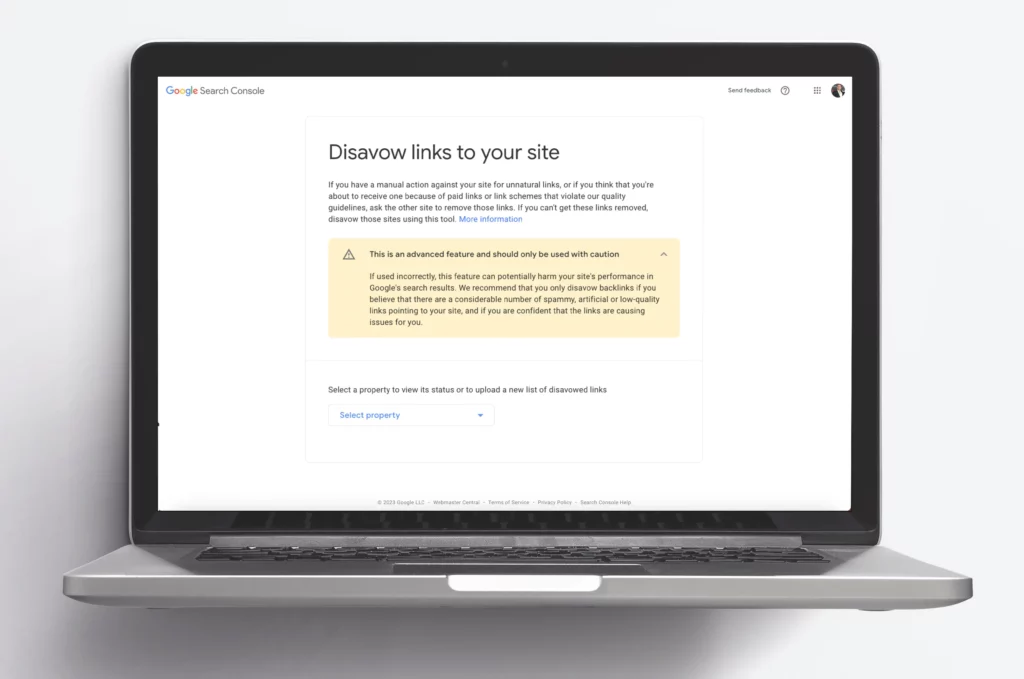How to Disavow Links?
Backlinks are links to your website from other websites. They can be submitted manually by webmasters or automatically by SEO software. They have been one of the most effective ways to improve search engine rankings over the years. But, Google has made it harder and harder to add high quality links to your site. There are two types of bad links: those that violate Google’s guidelines for link building and those that harm your site in some way. For example, if someone links to your site from a page that contains malware or automated software, then you could be in trouble with Google.
It is also possible for a bad backlink to cause issues with your website’s performance or even make it go offline entirely. Here is A new tool to disavow links.
It is also possible for a bad backlink to cause issues with your website’s performance or even make it go offline entirely. Here is A new tool to disavow links.
What is a toxic backlink?
A toxic backlink is a backlink that can have a negative impact on your website. It could be a backlink from a spammy site or one that contains malicious code.
A poorly-made backlink can harm your website in many ways.
It could harm your site’s search engine rankings by increasing the number of “bad” links pointing to your website. This may cause Google (or other search engines) to think that you are trying to manipulate your ranking, and penalize you for doing so.
If the search engines detect that one of the links on your site is bad, they may remove the link entirely (also known as “deindexing”). This will make it more difficult for people to find your content via search engines.
If you receive too many bad links, Google may flag your entire site as being harmful or spammy!
Here are Google’s guidelines on “link schemes.”
What is disavowing toxic backlinks?
Disavow tool is a feature provided by Google that allows webmasters to hide links from their site that are considered toxic. A toxic link is one that is not relevant to the content of your website or can potentially harm the user experience. For example, if someone buys links from you, these links will be considered toxic since they aren’t relevant to your website’s content. Unless they are linking to a specific page on your site.
In order to obtain a clean link profile, you must remove all of these toxic links. This process is known as “disavowal” or “un-mentioning”.

Why Disavow toxic backlinks?
The Disavow file is a text document that you upload to Google Search Console (now called Search Console). When you upload a disavow file, it tells Google to ignore links that you don’t want to count.
Google uses this signal to help identify spammy or unnatural links pointing to your website. Disavowing spammy links is an important part of cleaning up your link profile. We recommend that all webmasters keep their disavow files up-to-date as they clean up their backlink profiles.
Why Disavow toxic backlinks?
Disavowing links is one of the most effective ways to control your SEO visibility. By disavowing links from spammy websites and competitors, you can remove negative impact from your site’s ranking on Google.
The disavow tool allows you to tell Google that the link is not your responsibility and should be ignored. This helps the algorithm know which links are true and which are false.
Once you have disavowed a link, here’s what happens:
- Google will no longer count that link as a vote for your site.
- The link will still show in search results, but it won’t have any direct impact on your rankings.
How to Disavow links in Google Search Console?
Disavow Links is a tool that allows you to specify links you would like Google to ignore. This can be useful if you have received a manual action for unnatural links, or have seen a drop in rankings after a Penguin update. Disavowing links is not the same as deleting them. When you disavow an incorrect link, we trust that it is no longer associated with your website.
To Disavow links, follow these steps:
- Head over to the Google Disavow Tool
- Click the gear icon and select your property.
- Upload your Disavow list

Disavow Links Quickly and Easily
Disavowing links is the best way to remove any negative impact that could be caused by an unnatural link pointing to your site.
The process of disavow is simple, but there are several steps that need to be taken into consideration. First, you have to identify all the links that need to be disavowed and then you can submit this list to Google’s Disavow Links tool.
For this, we strongly recommend using a tool like SEMrush that has a built-in disavow tool. You can simply upload all your backlinks and then see which ones are spammy or not. After that, you can add these domains to the disavow list. It’s easy and fast!
Final words
Backlinks are the lifeblood of your site and its position in search engine results. They can also be a source of trouble. We’ve talked about backlinks before, so we’ll keep this short and sweet. Remember, backlinks are links that point to your site from other pages on the web. They can be from other websites, from social media posts or from blog comments.
They are how search engines determine how important your website is. So, the more backlinks you have pointing to your site, the more relevant it is for certain search queries. Search engines use link analysis to determine whether a particular link is good or bad for their users. Also, if it should be counted as a vote for or against your website’s ranking in their SERPs.
All in all, observing backlinks and toxic links is important. It is because if you don’t know what’s happening on your site and who’s linking to it, then you won’t know who’s driving traffic to your website and what they’re saying about it either!
Curious about the ins and outs of digital marketing?
Subscribe to our email newsletter for the latest digital marketing insights, and also make sure to read our blogs. See you next time!






